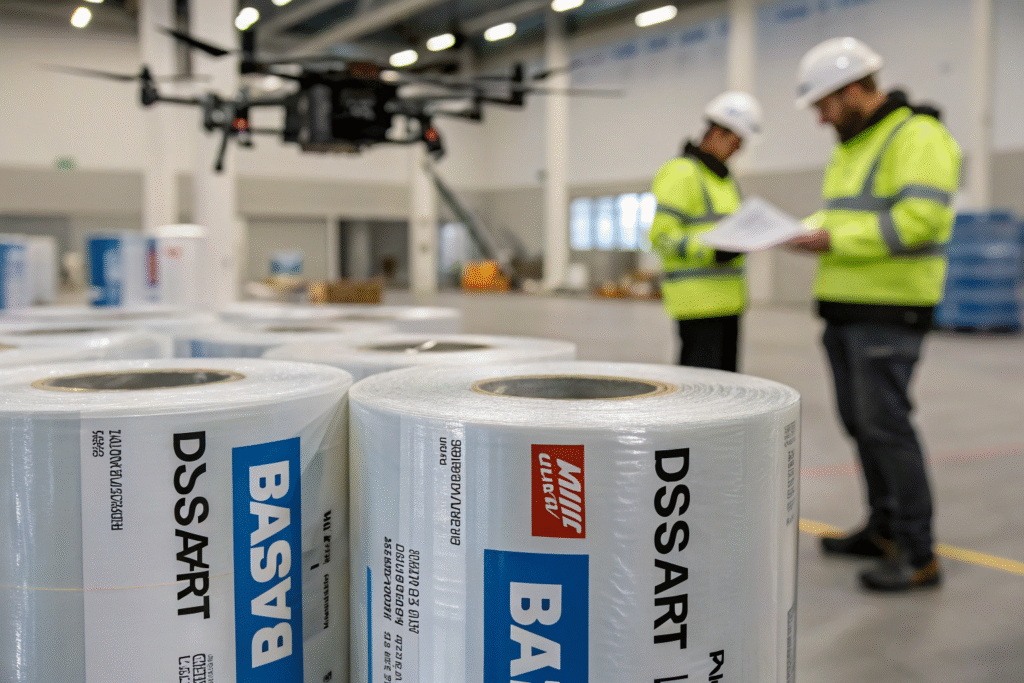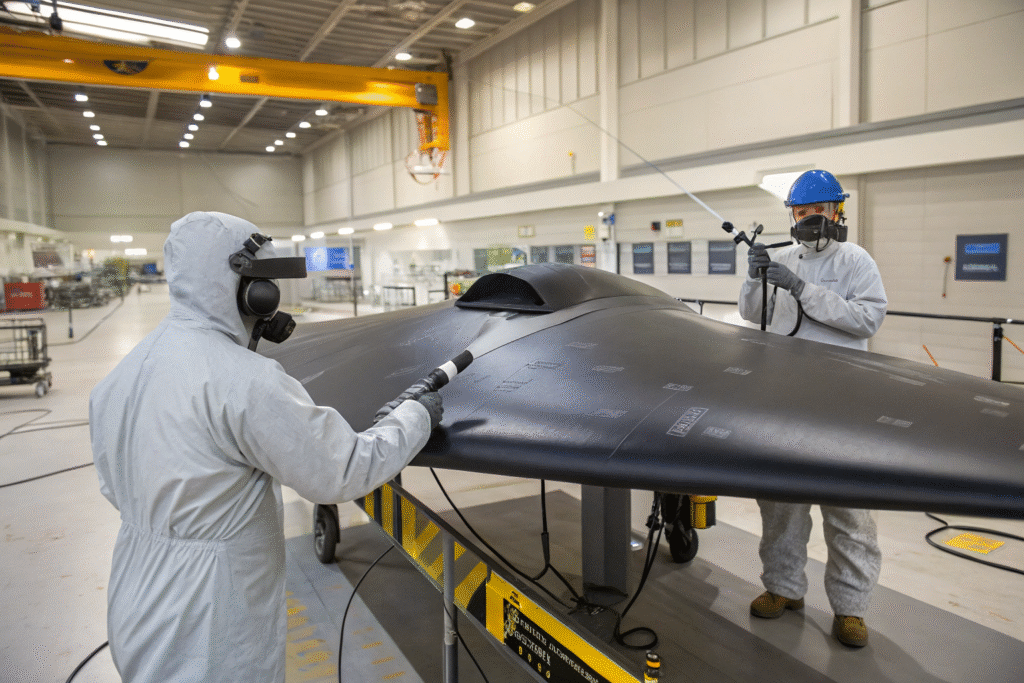In today’s aerospace and defense industry, stealth technology is no longer just for next-generation fighter jets. Small and medium-sized drones are also integrating radar-transparent composites to reduce their radar cross-section (RCS) and remain undetected during surveillance and tactical missions. However, many buyers, engineers, and entrepreneurs still face the same problem: where to find reliable suppliers of radar-transparent composites that balance strength, stealth, and cost efficiency?
The short answer is that radar-transparent composites are available from both established aerospace chemical companies and emerging stealth-tech innovators. By understanding the material categories, suppliers, and industry applications, drone developers can choose the right source for their stealth needs.
At Fumao, I have worked with many international buyers who struggled with material sourcing delays, high tariffs, or unreliable quality. This article will give you a roadmap for finding radar-transparent composites, covering the top suppliers, latest research directions, and practical recommendations.
Best Suppliers of Radar-Transparent Composites
Many aerospace companies have already established themselves as leading providers of radar-transparent composites. These suppliers combine years of material science with certifications and production capacity, making them a strong choice for drone builders.
If you want guaranteed aerospace-grade quality, companies like BASF, Toray, and TenCate offer high-performance composites and resins engineered specifically for stealth and radar transparency.

What Makes BASF and Toray Leaders in Radar-Transparent Materials?
BASF has developed Ultradur® high-speed thermoplastics, widely used in radomes and antennas due to their radar transparency and mechanical strength. Toray, a Japanese leader, provides advanced carbon fiber composites that can be tuned for stealth and lightweight performance. For those searching for large-scale, certified production, both BASF and Toray maintain strong reputations and global reach. For example, BASF’s materials are already referenced across Aerospace Manufacturing News while Toray’s aerospace-grade composites are reviewed on Toray Advanced Composites.
Their global supply chains, along with partnerships in Europe and the U.S., allow stable sourcing without major risk from tariffs or shipping bottlenecks.
Are Specialized Composite Startups Worth Considering?
Beyond the major players, new entrants like FibreCoat are gaining attention. FibreCoat has developed a radar-transparent fiber-reinforced composite that is reported to make drones “invisible to radar.” This is a breakthrough material, especially for smaller UAV developers who want to stand out in competitive defense tenders.
Startups can often provide more flexibility and customization compared to corporate giants. Yet, it’s important to confirm certifications and production capacity. Websites like Defense Advancement and Composite World often highlight such niche companies, helping buyers discover alternatives beyond the mainstream.
Cutting-Edge Research in Stealth Materials
For those looking beyond off-the-shelf solutions, research labs and universities are driving innovation in stealth materials. Radar transparency is no longer limited to thermoplastics; new metamaterials and nano-composites are entering the scene.
Institutions in China, Europe, and the U.S. are testing composites with MXene, graphene, and indium-tin-oxide metamaterials that combine radar transparency with infrared stealth.

How Do Metamaterial Absorbers Work for Drones?
Metamaterial absorbers can manipulate electromagnetic waves with engineered structures. Researchers have created flexible and optically transparent sheets that absorb 90% of radar waves between 2–16 GHz while still allowing light through. Such properties could make drone canopies both radar-transparent and visually stealthy.
These innovations are documented in publications like ScienceDirect and Springer Link, where scientists are actively experimenting with flexible transparent radar absorbers. For a drone manufacturer, partnering with labs testing these materials could be a strategic step toward next-generation stealth.
Are Nano-Composites the Future of Drone Stealth?
Nano-composites are emerging as a dual-band stealth solution, providing radar and infrared reduction. MXene and graphene offer conductivity control, while MOFs (metal-organic frameworks) allow tunable absorption. While still pre-commercial, early prototypes are already being evaluated by aerospace defense programs.
Companies that stay ahead in stealth often monitor nano-composite research closely. A strong example is the work documented by ResearchGate and X-MOL, showing how advanced materials are moving from concept to test flights.
Radar Absorbent Materials and Coatings
Even if structural composites are radar-transparent, drones often need coatings to further reduce RCS. Radar Absorbent Materials (RAM) are essential, especially for UAVs with multiple exposed surfaces.
Many suppliers now offer carbon-based, ceramic, and magnetic nanoparticle-infused RAM coatings that can be applied directly to drone fuselages.

Which RAM Coating Suppliers Should Drone Makers Trust?
Companies like RF Nanocomposites and Saint-Gobain supply coatings used by military contractors worldwide. RF Nanocomposites, for example, develops nanoparticle-based paints designed for drones, vehicles, and even ships. Their products are listed in detail on RF Nanocomposites and Defense Advancement.
These coatings provide flexibility, ease of application, and proven radar suppression, making them a cost-effective add-on to structural stealth composites.
How Do Transparent Ceramics Fit Into Drone Stealth?
While less common for drones than for missiles, transparent ceramics like ALON (aluminum oxynitride) or spinel can provide stealth for windows and domes that also require optical clarity. Manufacturers like Surmet and coverage on Wikipedia document their use in aerospace applications.
For drone developers, ceramics may be considered for high-speed surveillance UAVs that require both radar stealth and infrared window protection.
Practical Tips for Sourcing Stealth Composites
Finding radar-transparent composites is not just about identifying suppliers. The real challenge lies in certifications, logistics, and integration into drone design.
A smart sourcing strategy combines established suppliers, new startups, and ongoing research partnerships.

What Certifications Are Critical for Drone Composite Buyers?
Look for suppliers with aerospace certifications such as AS9100 and testing through SGS or ITS labs. For example, BASF and Toray both maintain these certifications, which you can verify through SGS Testing Services and AS9100 database.
Certifications not only guarantee safety but also make it easier to pass export and import clearance, reducing delays at customs.
How Can Logistics and Tariffs Be Optimized?
Sourcing stealth composites globally can face tariff challenges, especially for U.S. buyers. Working with suppliers that have overseas warehouses or Belt and Road logistics hubs (like Keqiao, China) can significantly reduce shipping times.
For instance, Saint-Gobain maintains European hubs, while Chinese suppliers often leverage the Belt and Road Initiative for customs clearance advantages. Buyers can also consult Trade.gov for tariff updates and mitigation strategies.
Conclusion
Radar-transparent composites are no longer reserved for top-secret military projects. From BASF’s thermoplastics to RF Nanocomposites’ RAM coatings, and from FibreCoat’s innovative fiber composites to graphene-based metamaterials, the options are growing.
The key is balancing performance, certification, and logistics. By sourcing from trusted suppliers while also monitoring emerging research, drone developers can secure the stealth edge they need.
If you are looking for a reliable partner in advanced fabric and composite sourcing, Shanghai Fumao is ready to collaborate. We provide comprehensive support from sourcing to logistics. You can contact our Business Director Elaine at elaine@fumaoclothing.com to discuss your stealth material needs and place orders tailored to your production.










